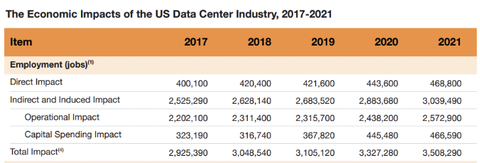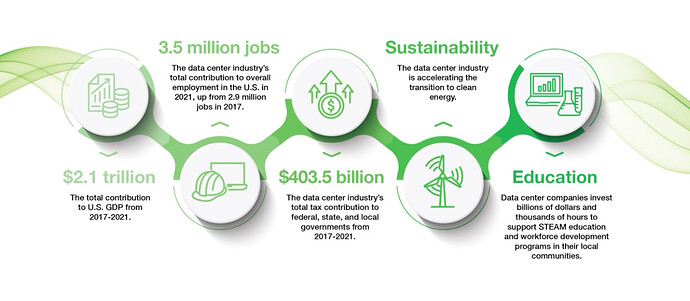Hello fellow Edge Ryders,
I have a pretty technical question about understanding the economic impact of deploying datacentres around the world, and I’m hoping some of the replies will help point me in the right direction to understand how claims around job creation are made in studies like the one below.
This report here, where the Data Center Coalition commissioned PWC to study the impact of datacentres in the US economy makes some eye opening claims about their economic impact of datacentres. Here are the headline stats they lead with:
Full report is available on the data center coalition website - here’s the direct download link to avoid needing to give your email address
Anyway, there’s an interesting comment here on LinkedIn:
Back of the napkin math, but that’s about 2% of total US GDP over that time period - which would make it twice as big as the entire agricultural sector, and half the size of all of construction. That seems unlikely, unless I’m missing something.
Source: Comment on Linkedin by Sebastian Moss
These figures seem to be based on a combination of a economic model, IMPLAN, and some public data.

So my question is this - how are these made, and how are policy makers able to critique them when they’re used?
I’ve ended up in the unexpected position where I’m doing a talk at the IEA in Paris in October, about datacentres, energy systems and climate, and while I feel relatively comfortable talking about grids and tech, when these figures are thrown around, I’m less confident.
I can see why policy makers and local governments would lap these economic figures up, but the main responses I see from people skeptical of their impact seem to be focussed on local resistance, without ever addressing the economic uplift claims.
If the hive mind here has any recommendations on how to interrogate claims like this, or even respond to them, I’d be grateful, and this seems to be an area of renewed discourse around digitalisation, particularly in Europe.

